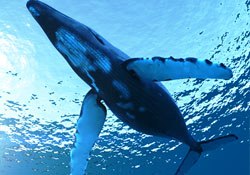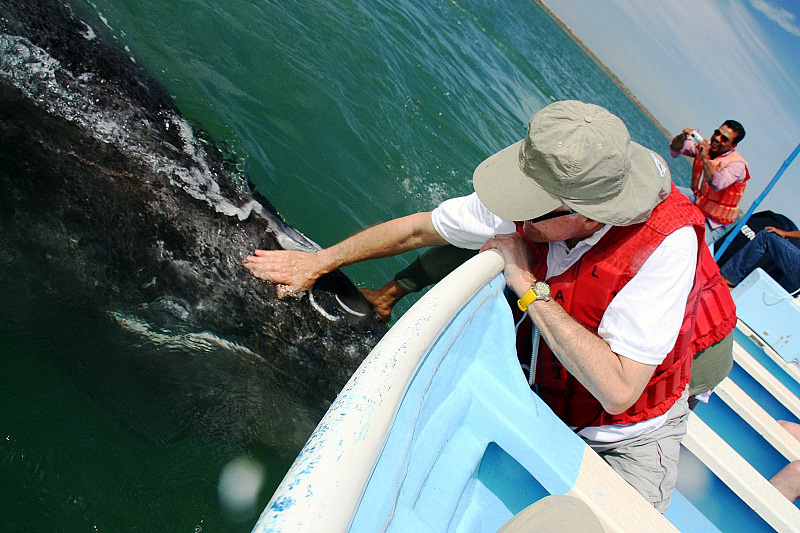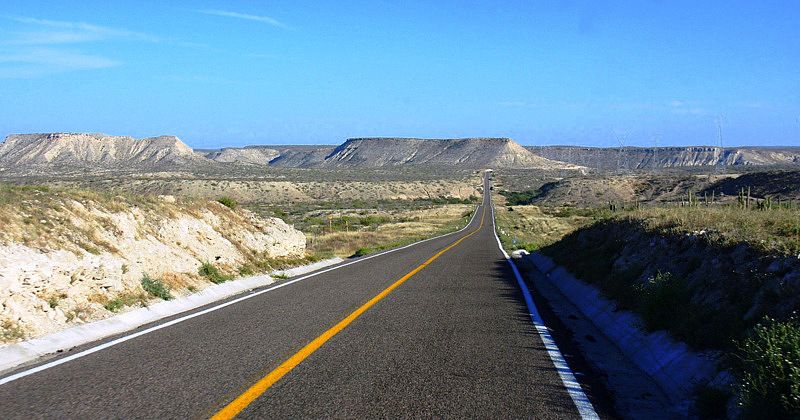In Costa Rica there are as many wildlife tours as probably there are kinds of animals in the small Central American country. All of them are very worthwhile, but nearly nothing beats the thrill of whale watching!
There must be something about being in close proximity to a giant intelligent being that is fascinating, especially when we are in such a vulnerable position in a (by comparison) tiny little boat observing these gentle giants on their “turf” … or, rather, patch of ocean.
A real-life
Whales (12)
‘"Migaloo" was the name of a white humpback whale which was seen in Australian waters some time ago, and still appears from time to time … recently, I heard a white whale calf had also been seen. In the language of Australia’s indigenous people, it simply means "White One’" - and I have the greatest admiration for Australian conservationists and marine biologists who didn’t immediately christen it "Moby Dick".
We didn’t see Migaloo when we visited in 2010, but we did cruise on the boat named aft
The virgin and harsh beauty of Icelandic nature is really fascinating. It is true, here there is something to see: powerful waterfalls, active volcanoes, geysers (springs, periodically throwing out hot thermal water and steam, one of the manifestations of vulcanism), giant glaciers. Well, the natural beauty of the island is supplemented with the existence of various animals and birds.
Let’s have a closer look at the various fauna of Iceland. One can see arctic foxes, reindeer, mink and mouse li
The last time I was at Playa Nicuesa Rainforest Lodge, I was down at the beach cooling off from the hot sun in waist-deep tranquil waters of the Golfo Dulce, when suddenly there was a splash very close behind me. I turned quickly to look out toward the Gulf and was greeted by three Bottlenose Dolphins calmly gliding about 15 feet past me parallel to the beach.
This is how it is on Golfo Dulce in southern Costa Rica. During whale-watching season, you might see a Humpback
In the warm waters of the Golfo Dulce in southern Costa Rica, Pacific humpback whales are about to arrive on their annual migration to mate, give birth and socialize from July to October.
A spray of water erupted from the placid blue-green water a few hundred yards off the beach. The long, black and barnacled form of a mother humpback whale surfaced gracefully for air. Our little group standing on the concrete pier pointed excitedly at the huge whale. Then we gasped in delight as we suddenly
On the coast of Bahia 82 kilometres north of Salvador, the town and beach of Praia do Forte are situated in a protected area with 12 km. of almost deserted beaches surrounded by lush plantations. It enjoys a privileged location close to the Mata Atlântica Biosphere Reserve, lagoons, beaches where the sea turtles lay their eggs, coral reefs, and places to observe humpback whales.
If you go to Praia do Forte, you should not miss the chance to take a deep-sea excursion to see these magnificent ce
The next time you get tired of winter, book a flight to La Paz or Los Cabos, in Baja California Sur, Mexico. During the months of January through April, the weather in La Paz is absolutely perfect, and it is a wonderful time to take the opportunity to get up close and personal with gray whales and their calves.
Getting There
La Paz has its own airport, but the bigger Cabo San Lucas airport about 100 miles south has more flights and services.
When we arrived in Cabo, we took a taxi for the almost th
I’m sitting at my desk, meant to be working. What I’m really doing is daydreaming about snorkeling in the Golfo Dulce in Costa Rica.
I’m plotting how I can get back to Playa Nicuesa Rainforest Lodge on Golfo Dulce. I’m remembering swimming in that calm sea and the feel of delicious water – not bath-water warm, but not cold either. I’m thinking about how clear the Golfo Dulce water is, and how vibrantly it changes color from deep jade green next to the shoreline where it reflects the jungle, to b
 Starting in August, the tranquil blue waters of the Golfo Dulce, between the Piedras Blancas National Park and the Osa Peninsula in southern Costa Rica, will witness one of the most amazing spectacles in the animal kingdom – the thousands-of-miles-long migration of Pacific Humpback Whales.
Starting in August, the tranquil blue waters of the Golfo Dulce, between the Piedras Blancas National Park and the Osa Peninsula in southern Costa Rica, will witness one of the most amazing spectacles in the animal kingdom – the thousands-of-miles-long migration of Pacific Humpback Whales.
The annual migration of endangered Pacific Humpback Whales is a remarkable journey of nearly 10,000 miles from near the North and South Poles to warm tropical waters to breed and give birth. As winter turns the
At the very bottom of Costa Rica, the placid blue waters of the Golfo Dulce shine like a mirror most days, reflecting occasional clouds and the immense cerulean sky. Its calm surface is broken by the odd small, local boat cruising along, but the most action is caused by dolphins frolicking or fishing, sea turtles swimming, fish jumping out of the water, and marine birds diving for those fish.
This time of year, the Gulf gets even busier with visiting migrating Humpback Whales. The “inner sea” of
I never thought I would see a blue whale outside of the Smithsonian museum. In fact, I thought they were almost extinct. On January 23, 2012 I saw four pairs of them. Blue Whaleswere not even on my bucket list. When we started doing research on Sri Lanka we found out that about ten years ago, fisherman,and people living on a cliff overlooking the southern tip of Sri Lanka started reporting seeing amazingly large “fish”. Soon, scientists showed up and the “‘fish” turned out to be actually mamals.
Perhaps the only difference between us and the whales is in the choices we make.
Are whales just the result of our common wolf-like ancestor's great sea adventure? Read more, and then let me know what you think.
These belugas are fully adapted to an aquatic life, but ancient whales
lived where shore meets sea. @Candice Gaukel Andrews


